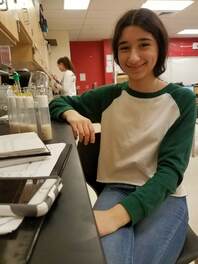 Wow! It’s already been four weeks since TRIP started, and it’s been an exceptionally interesting experience already. I got to perform an assay that measured how much glucose is present in flies of four different environments (a control, drug, stressor, and drug + stressor vial), and then was able to present my results. I also discovered that my results extremely contradicted my predictions and I received the exact opposite of my hypothesis. Performing the actual assay was considerably fun as I worried my colleagues would question my sanity when I enjoyed chopping the heads off several flies and disposing them into the morgue later…. (: 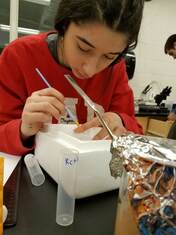 More importantly, I finally discovered what I wanted to do for my independent project. I have been contemplating whether antidepressants can actually reduce the fertility of flies, as there have been small and insufficient amounts of research that answers my question pertaining to humans. I know several relatives and acquaintances that are prescribed some antidepressants and they also find it difficult to conceive children; therefore, I want to find out if the two correlate or if it is all just a coincidence. If all goes well, I will be able to test the effects of a certain antidepressant by counting the embryos that hatch from treated flies by using the female and/or male fertility assays.
0 Comments
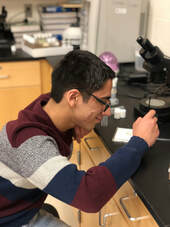 So far in TRIP, I have completed by first screen project and presentation where I analyzed the effects of St. John’s Wort and Darkness on fruit fly anxiety/overall fitness levels. The experiment was very interesting and was definitely a new experience for me. Getting to conduct my own experiment was super fun and educational. I had a couple of issues with flies… well, flying away, but luckily, I was able to collect conclusive data. 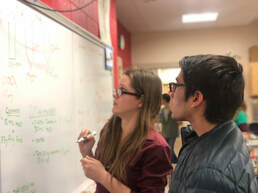 I found that the St. John’s Wort drug enhanced energy levels in flies (which was seen through their monitored activity) and long exposure to darkness severely hindered energy levels in flies (which was seen through their lack of activity). This data could be used to derive conclusions on the effects of darkness on depression in humans, and how St. John’s Wort can counteract that which, to me, is pretty cool! I presented this information yesterday to my peers, the instructors, and the assistant instructors, and it went pretty well! This was the first scientific lab-based presentation I had ever given!
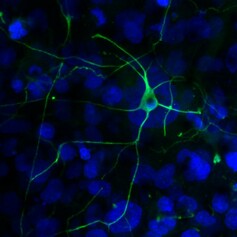 Therefore, for my independent project, I have chosen to study the effects of substances that influence the brain like nicotine (cigarette smoke), n-Hexane, melatonin, and mercury on neurogenesis in fruit fly larvae. Regarding the cigarette smoke, I would like to pursue an experiment in which I compare the effects of electronic cigarette smoke to traditional cigarette smoke and see how they each affect neurogenesis. Neurogenesis is the growth and development of nervous tissues. Through larval brain and disc dissection, I will be able to get access to the larval brain and see how the drugs impacted the brain. I will use phosphohistone H3 (pH3) staining to give myself a visual representation of the proliferation in the neural crest cells. The more positively stained cells that are in each sample, the more proliferation. Furthermore, I will apply separate environmental stressors, which are changes in circadian rhythms and temperature to my experiment. Before I begin my experiment, I predict that the larvae that are exposed to the different drugs from their embryonic stage will experience a negative impact to their central nervous systems, thus decreasing the rates of proliferation in the neural crest cells. I believe that my independent project will help quench my thirst for knowledge and will lead to me having an even deeper appreciation for neuroscience.
The female fertility assay that I did during the first four weeks allowed me to get comfortable with working with the tiny flies, and it has given me the golden opportunity to learn more about the different assays that I can employ in my independent project. Furthermore, the female fertility assay that I conducted helped familiarize me with the lab equipment and protocols, which will improve my ability to perform my independent research. For example, the picture to the left above with the four collection cages shows my incubation period during my female fertility assay. Through that step, I learned how to properly make and handle grape plates, in order to encourage more flies to lay their embryos. I am looking forward to carrying out this exciting experiment and learning more about neuroscience!
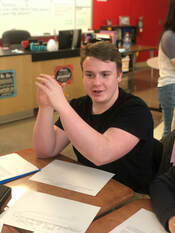 Hello!! The past few weeks have been exciting. I got to run my first assay with fruit flies. I used the Centrophobism assay to find how my drug (St. John’s Wort) and stressor (constant darkness) affect mood. When I first saw the name of my assay, it looked complicated, but when the word is broken down, it’s simple. Centrophobism literally means fear of the center, so the assay measures the levels of the flies anxiety. Running the assay was thrilling. I started with icing the flies to knock them out and placing one fly into a petri dish with agar; I did this for three flies for each experimental group I had. After my assay was set up, I could start getting some valuable data. 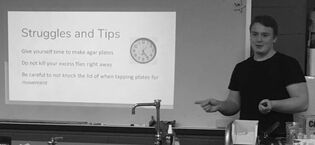 I ran into a few problems when taking my data. One problem was that I had one fly get stuck in the agar and it couldn’t move. Also, I had a fly escape through a crack between the plate and the lid. This was upsetting, but it was an opportunity to learn from failures and now I won’t make those mistakes for my independent project. Last Saturday, the class gave presentations on their screens and assays they ran. I was blown away with how prepared my classmates were and how fascinating some of their results were. I was a little nervous to give my presentation, but I gained a lot of confidence as I moved through it. I am still surprised by how much I’ve learned in in only a few weeks.
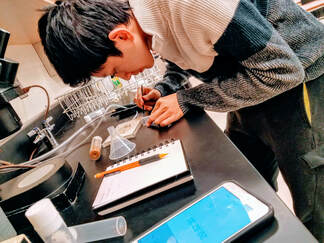 Remi practicing sorting flies Remi practicing sorting flies I’m back! It’s only been a month since I started TRIP, but we’re already getting ready for our independent projects! After learning the basics in week 1, we jumped right in and started sorting fruit flies based on gender. I’ve already let out countless flies into the atmosphere, and every time I have an itch I think one of those insects has landed on me. By week 3 we started performing individual assays. I conducted the female fertility assay, which required me to sort and count the females again. Although it difficult, I definitely saw improvement in my fly-sorting skills from week 2. That’s not to say I didn’t let out any flies… when one of the flies flew away I jumped and spilled half my vial. Luckily, most of them were knocked out. Unluckily, they died from that. :( The female fertility assay taught me how to count embryos, make grape plates, and properly handle flies. I still have a long way to go, but I can feel myself getting more accustomed to the process. 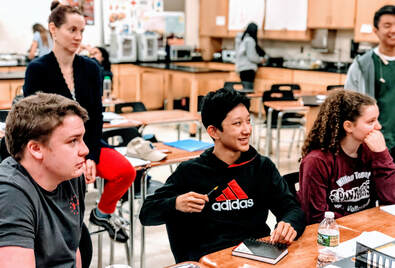 Developing project ideas Developing project ideas As part of my independent project, I’ve been thinking on experimenting on sleep deprivation. As a high school student it is often hard to get enough sleep. While schoolwork gets most of the blame, there’s no doubt that phones and other devices also impact our sleep time. Some students have resorted to taking caffeine pills in the morning to keep themselves awake. 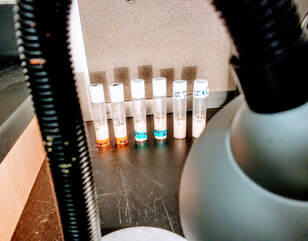 Constant light disrupts circadian rhythms Constant light disrupts circadian rhythms Sleep is obviously very important to our health; as such, I want to see if we can counterbalance the negative effects of phone screens and other distractions with sleeping pills. My prediction is that a drug made for sleep (such as zolpidem) won’t be able to negate the overall negative health effects of sleep deprivation. To test it out, I am using constant blue light as my stressor and zolpidem as my drug. Hey everybody! I’m fourth-week-Maya, and I say it that way because with every incoming week I have been completely changing my opinions and interests toward everything I’m experimenting with in the labs, especially with my ideas for the independent project. But eventually, finally compressing my thoughts with the pressure of two hours that I have sabotaged myself into leaving before the due time, I have finally settled upon a topic: lucid dreaming. Which strangely is also the first topic I had thought of experimenting with from the very first time I clicked upon TRIP’s website and landed upon the application. Even though I have personally never had a lucid dream, I am absolutely fascinated by the very act of it and how the mind could possibly subject a subconsciousness during a time of total unconsciousness. The way I see it, all dreams are purposely created by our brains, but we do not necessarily understand the purpose because most of the time, they’re more of the leftovers of the memory-ordering process our brains go through during sleep. And my hypothesis is if flies could possibly have increased REM-sleep - the most vivid stage of our sleep - then their cognitive ability and memory would drastically improve. Although my biggest fear is that this hypothesis is going to turn out to be wrong, it is something I have also prepared myself to embrace. That is the greatest mindset that TRIP has been teaching me to develop, even throughout these first few weeks. For there have been times where my results have been so insanely different than what should have naturally occured - and sometimes even the complete opposite of the proven result. But whether that matters or not is completely dependent on the way you’re going to swallow in not just the process but every other external factor that you’re completely blind to. We might go through this entire experience without ever completely distinguishing what these factors are, but at least we’ll be leaving with the knowledge that there’s something else out there that still needs to be discovered.
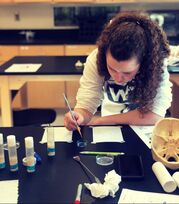 Hi again! For the past couple weeks I have learned so much about how to use new lab equipment, how to record and analyze data, and how to present my findings! In these past weeks, I have been focusing on how licorice and soap affect the gut microbiome. I completed my first assay last week on the microbiome where I would analyze different species of bacteria that grow on an agar plate. At first it was a little daunting, but now that I have experience I feel much more confident in my lab work and abilities.
In the next upcoming weeks, we are now going to start working on our own independent projects! I am very excited to begin my own research and be learning about something of my choice. I loved meeting everyone in the TRIP family for the past weeks, and I can’t wait to see everyone’s projects!
Hello everyone! I’m back! Wow. Last time I wrote, I was just starting my first experiment. And now, I’ve already finished it! Soap causes intestinal inflammation and reduces the number and diversity of gut bacteria, and my goal was to observe whether Uva-ursi had a positive, negative, or negligible impact when combined with soap. I originally predicted that Uva-ursi would have a negative impact on the gut bacteria of flies, but my experimental results suggested the opposite. To do my experiment, I used the microbiome assay to isolate and grow gut bacteria from my flies. Basically, I took five flies, drowned them in alcohol (to get rid of any exterior bacteria), added the flies to an MRS solution, diluted said solution, and then streaked the diluted solution on an agar plate, which was then incubated for a week. Whew! Although the microbiome assay is easy to perform, it takes a long time to obtain results. In fact, in the presentation I had to give about my experiment, I wasn’t able to include my experimental results because I was only able to see my agar plates a few minutes before my presentation. However, the main purpose of my presentation was to teach my classmates about my assay, not about my results, so everything went well despite my lack of presentable data. Anyways, now that my first experiment is done, I can begin my independent research project! I don’t know yet for sure what I’m going to be doing, but I think I have a pretty good idea. Research suggests that a ketogenic diet helps with recovery from traumatic head injuries, and for my experiment, I’d like to test whether different lipids (with different fatty acid chain lengths) can improve the memory of flies with head trauma. Right now, I’m thinking of using four different lipids - butter, coconut oil, olive oil, and mustard oil. I don’t know for sure whether this experiment is possible, nor do I know whether it will work, but I’m hoping for the best!
After countless days of wondering, researching, and being consumed by thoughts of fruit flies, I have finally come up with an idea for my independent research project. I will be researching how eating at different times or for different amounts of time affects overall health and the gut microbiome. New diets appear every so often, but there has been a recent trend of time-restricted diets, in which a person is only able to eat for 8 hours each day. The remaining 15 hours are to be a fasting period. Another popular diet has been eating small portions 6 times a day, rather than normal-sized portions 3 times a day. Many people are beginning to utilize these diets in order to lose weight, but I want to discover if they have actually have any additional benefits, apart from weight loss.
 Unless you love cutting heads off of fruit flies, you should probably reread the procedure a million times before you actually start the procedure. This week, we conducted our assays that we were assigned to in the beginning of the course. I studied the effect of cinnamon and high sugar on glucose metabolism in fruit flies. Even though the assay was pretty complex, involving multiple machines and different devices, everything went well in the beginning. I was learning a lot, and things became a little bit easier for me. For my assay, I had to cut the heads off of some flies. It was kind of disgusting at first, but I eventually got used to it and began killing the flies like it was a normal thing to do. In the picture, the rightmost side contains the heads and the middle section contains the flies without their heads. I didn’t realize that the heads were so small, and that made it a lot harder to find and cut off.
For my independent project, I’m still exactly sure what I want to do or what I want to focus on. Testing memory sounds interesting to me since that can have many real-life implications. I was also thinking about addressing sleep since I know a lot of my friends are not getting enough sleep. Therefore, my tentative experiment is to see the effects of sleep amounts on memory, but this could definitely change as I look into other ideas.
|
Archives
April 2024
Categories
All
|
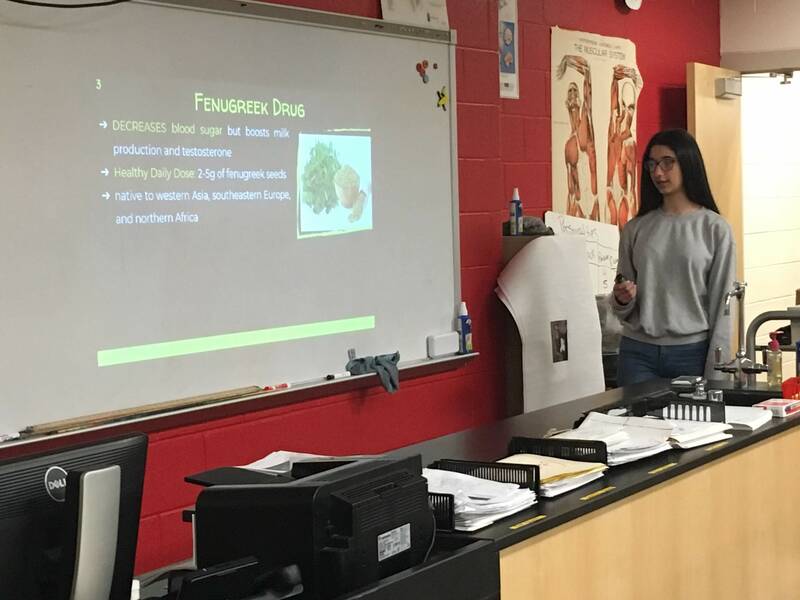
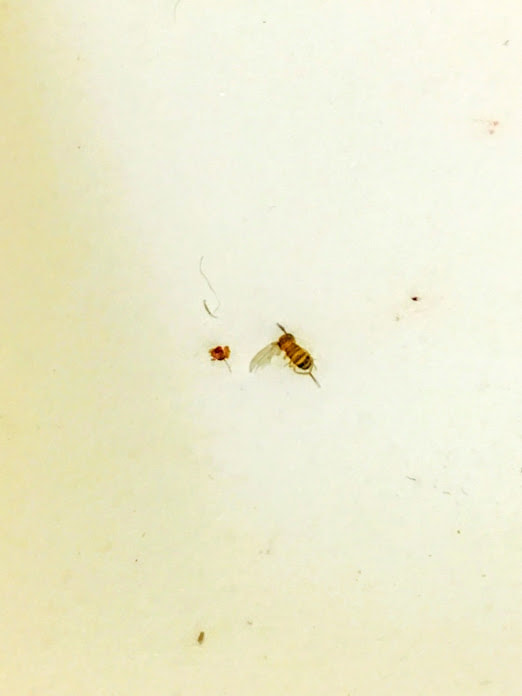
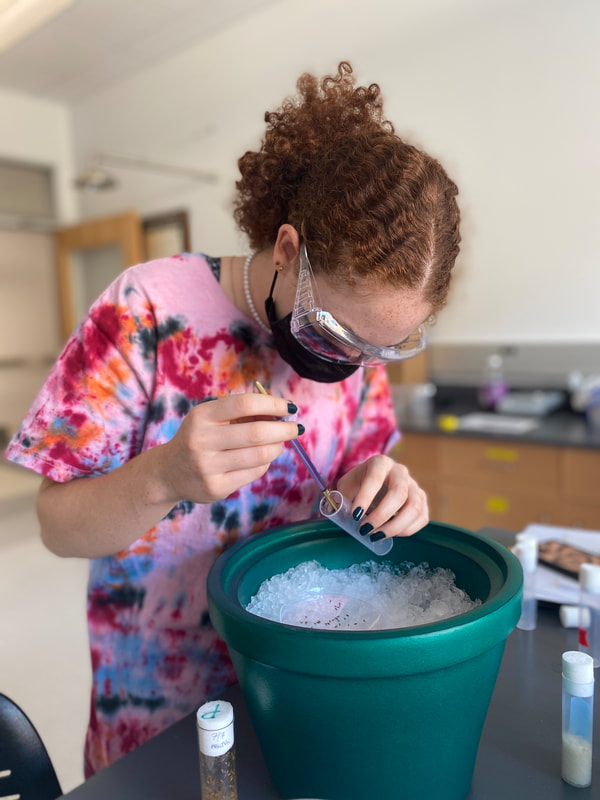
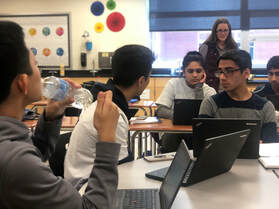
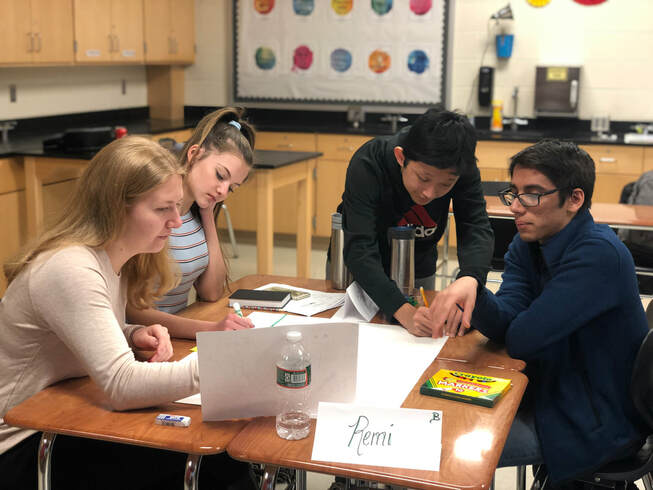
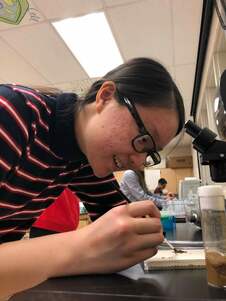
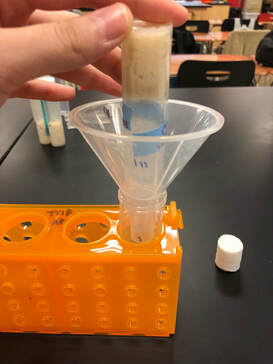
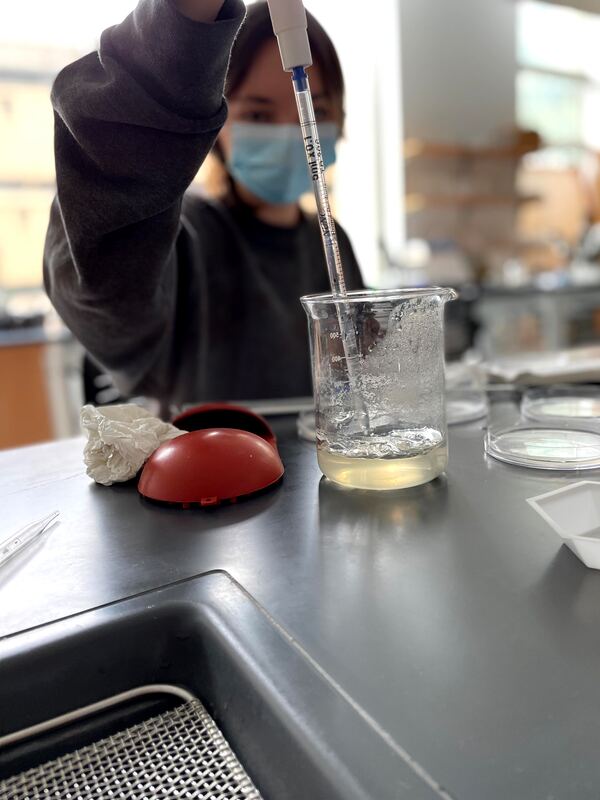
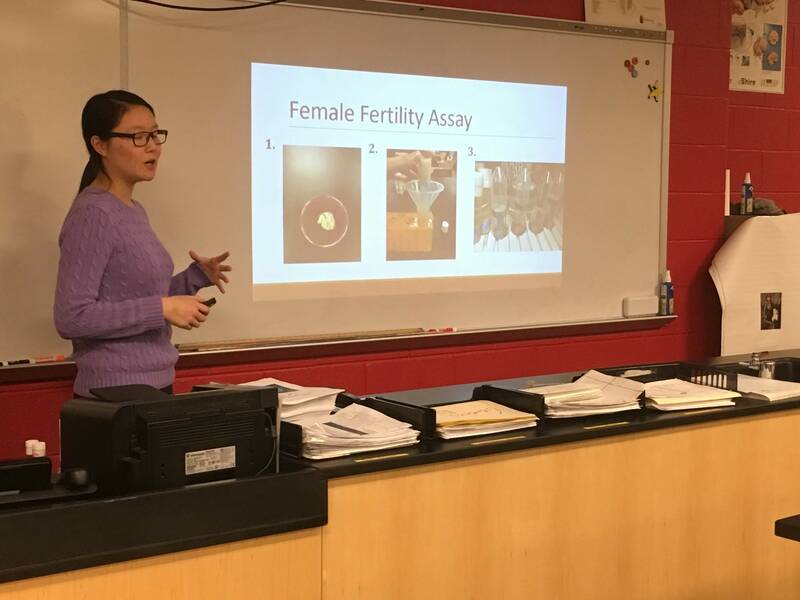
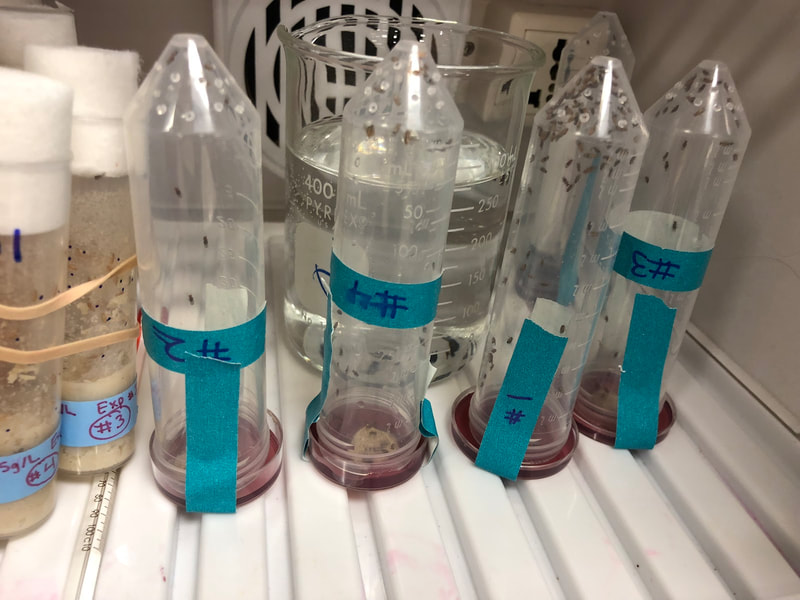
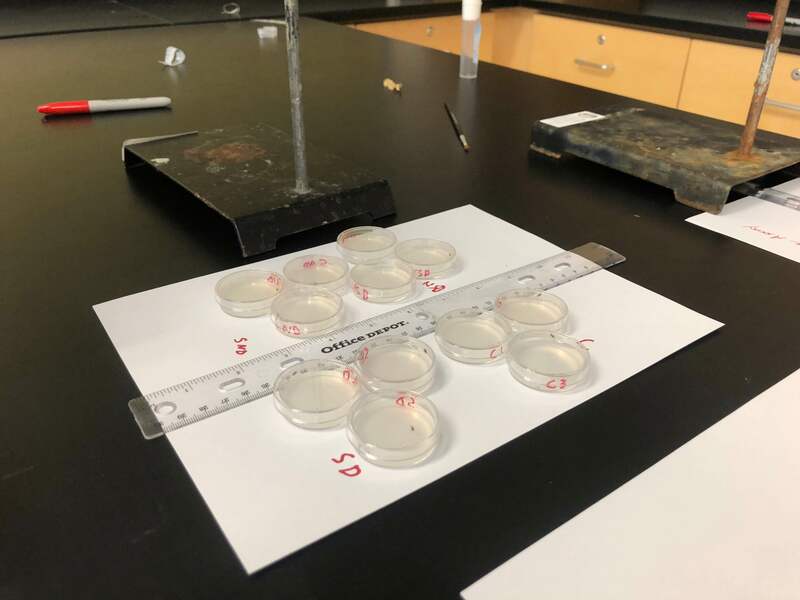
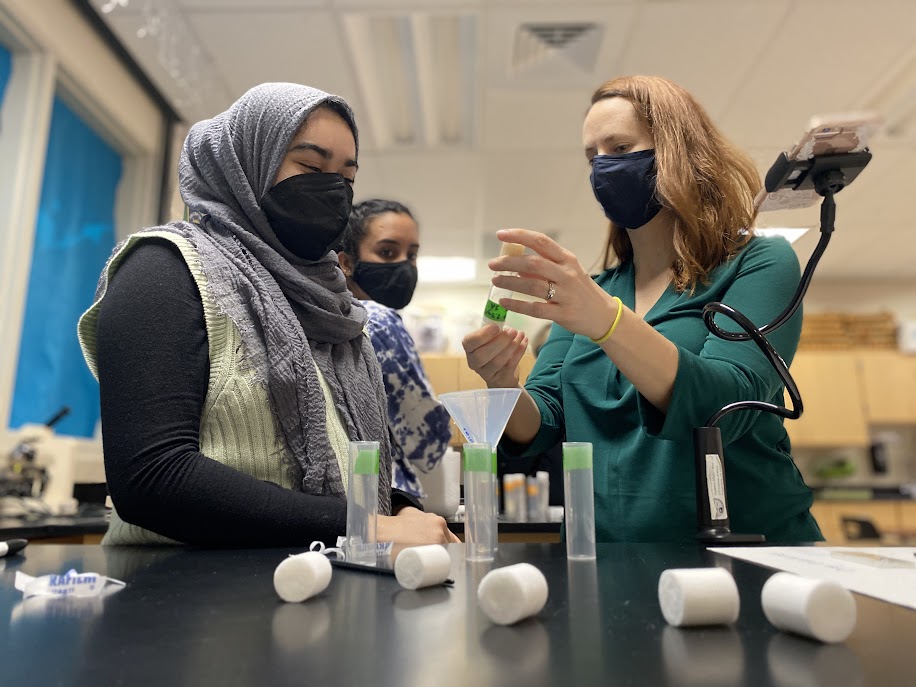
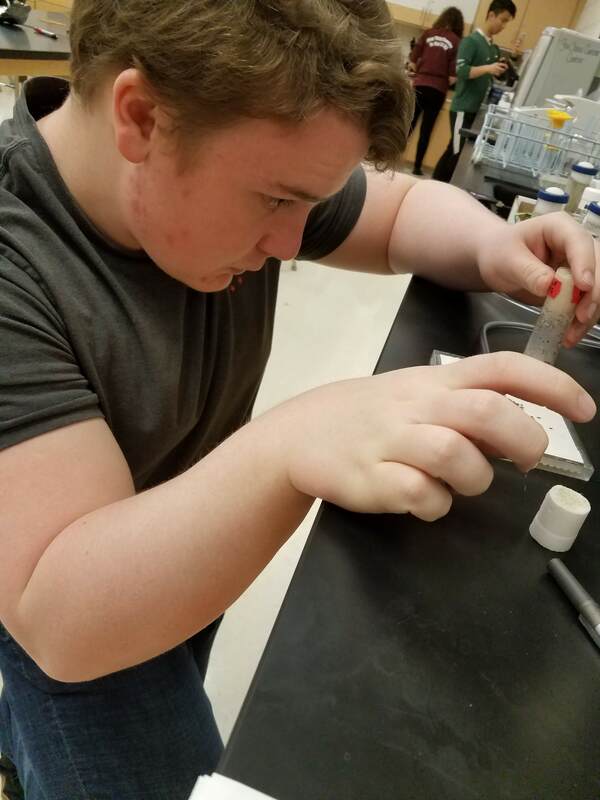
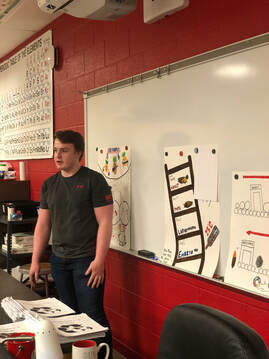
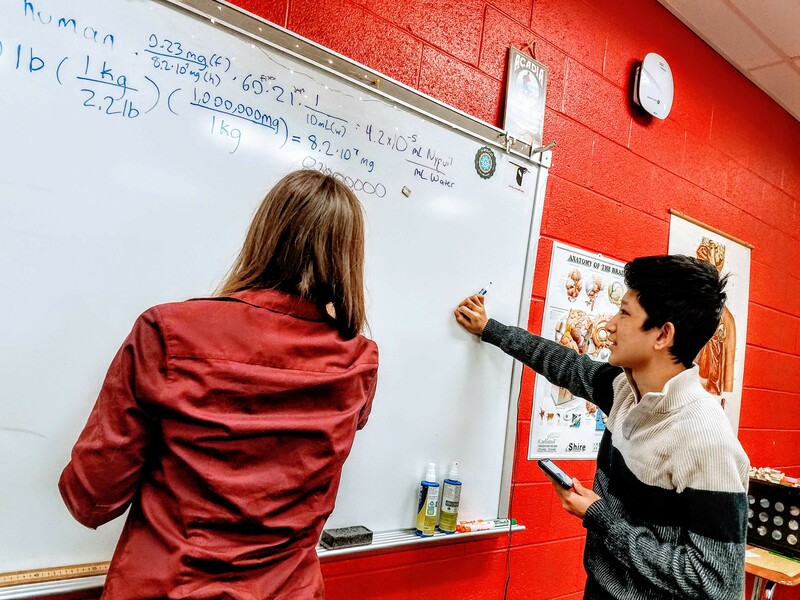
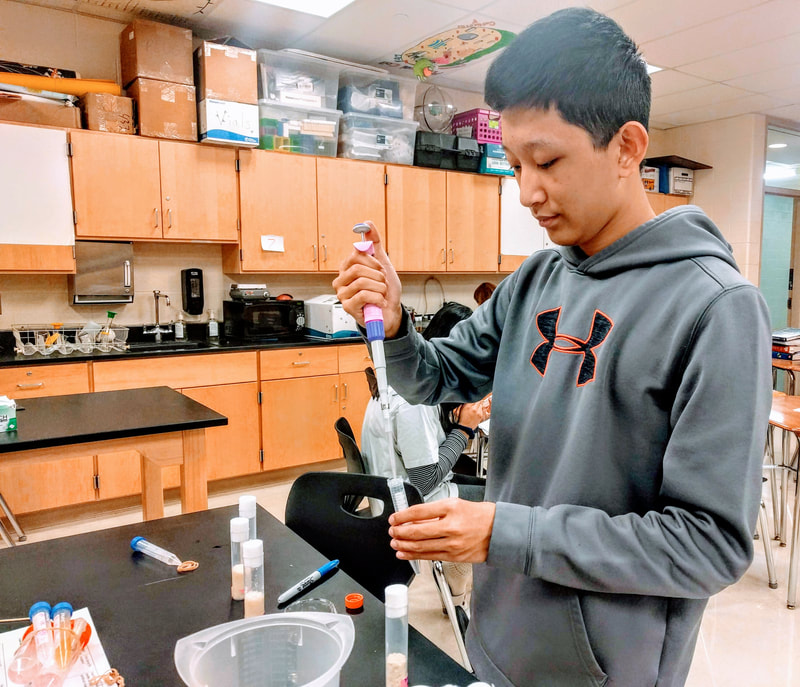

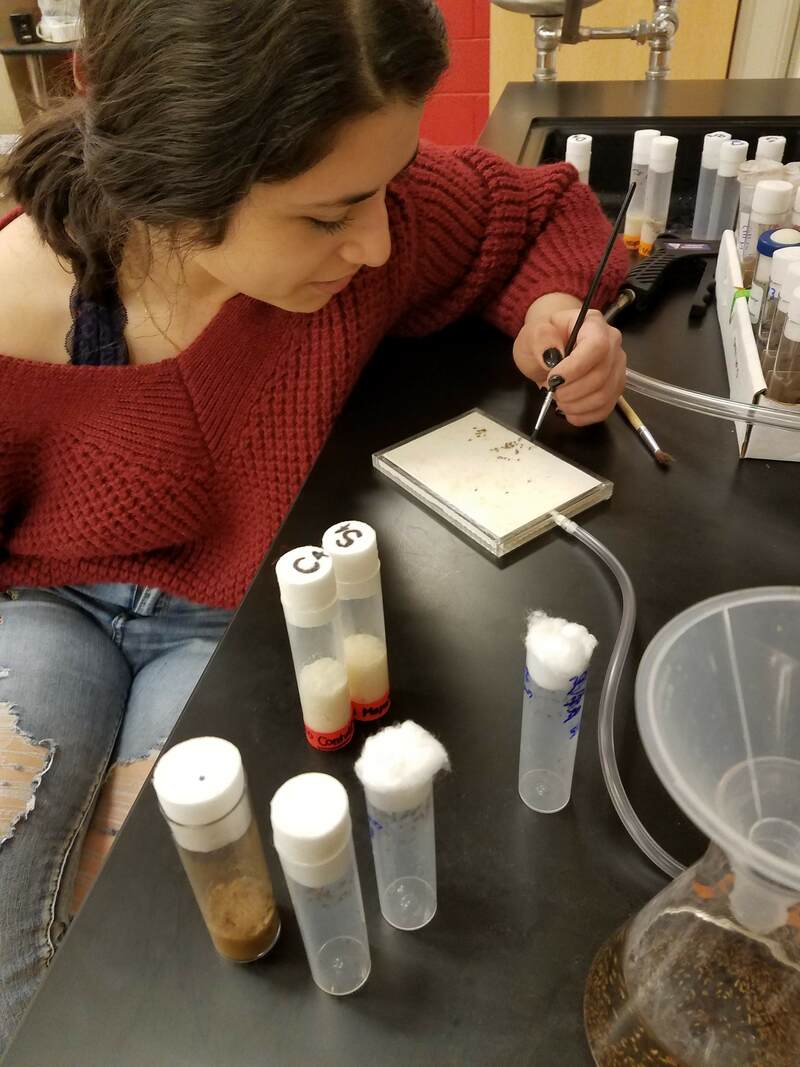
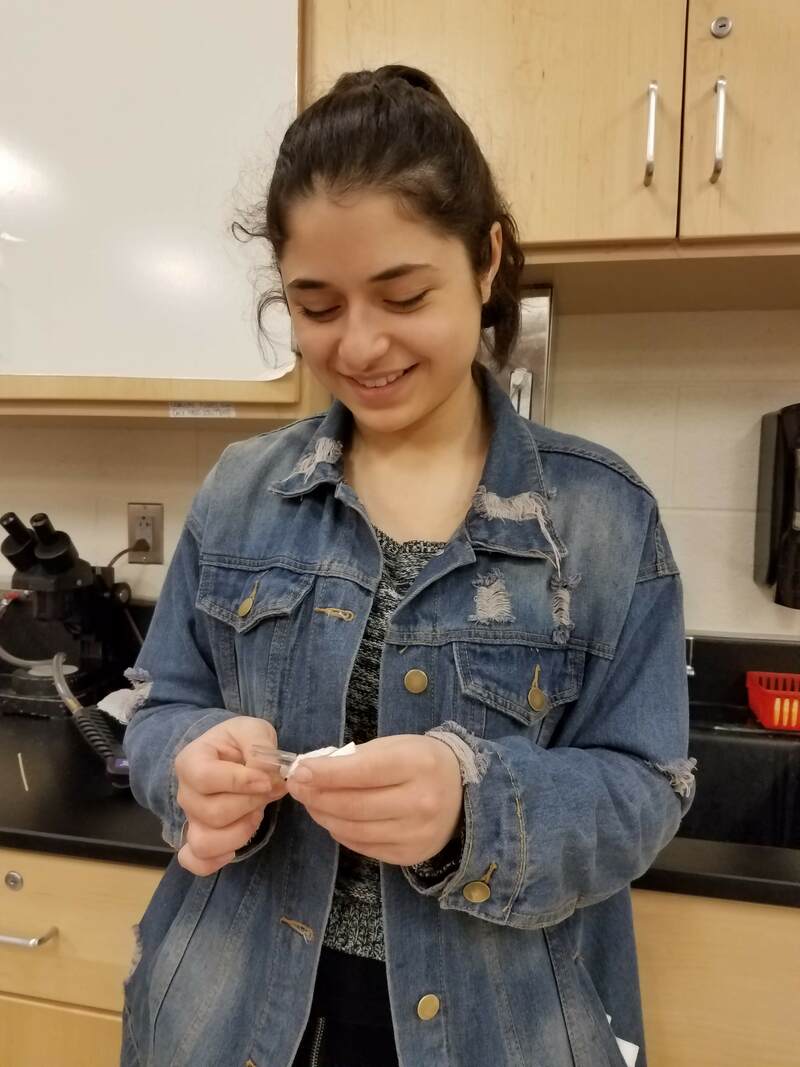
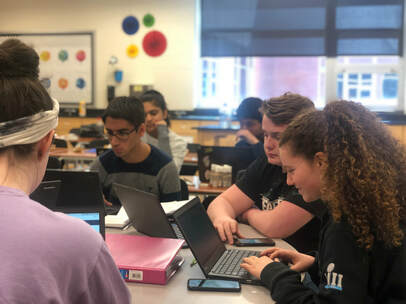
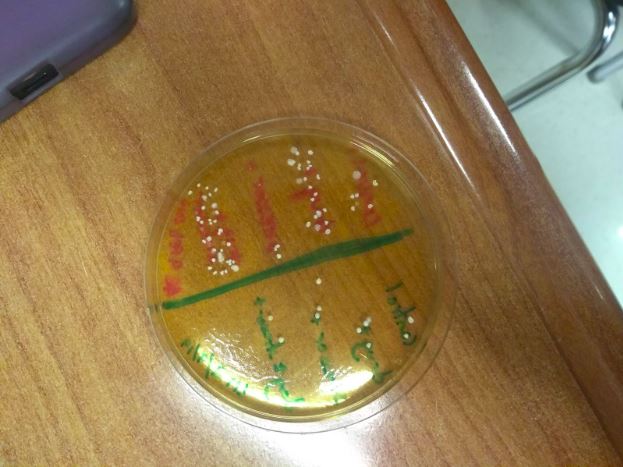
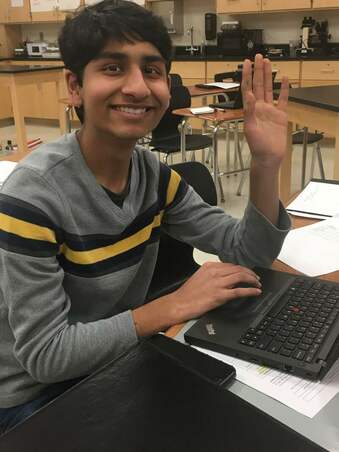
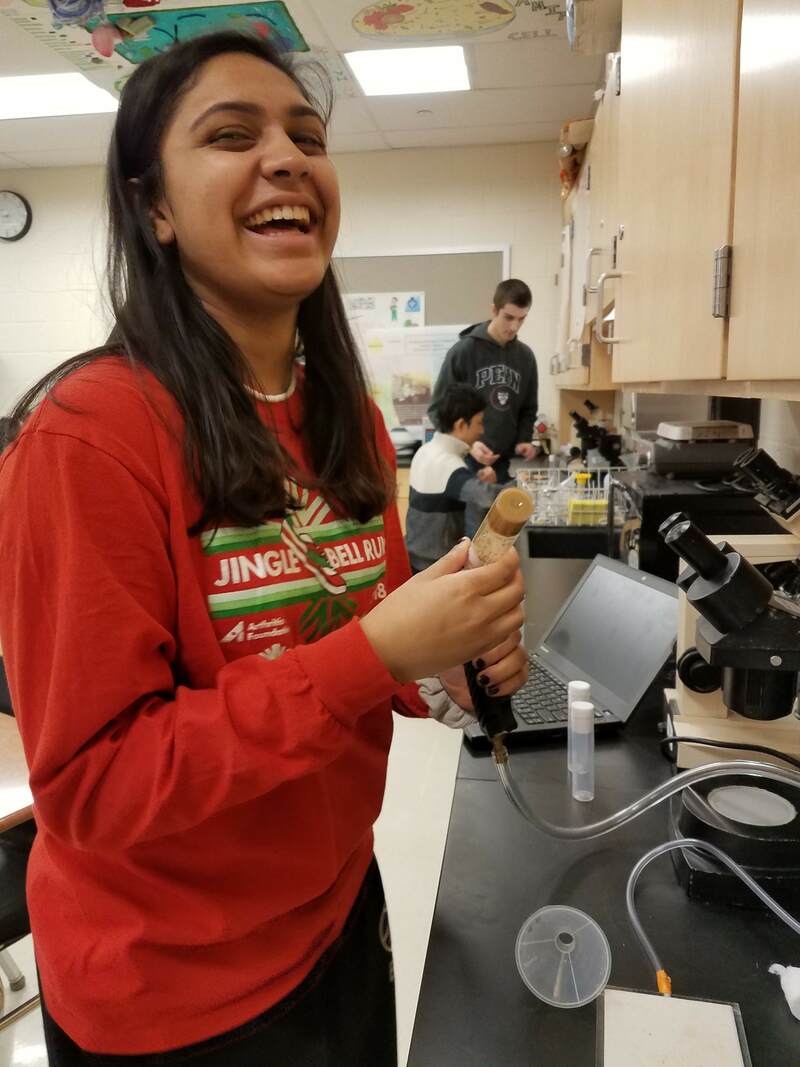
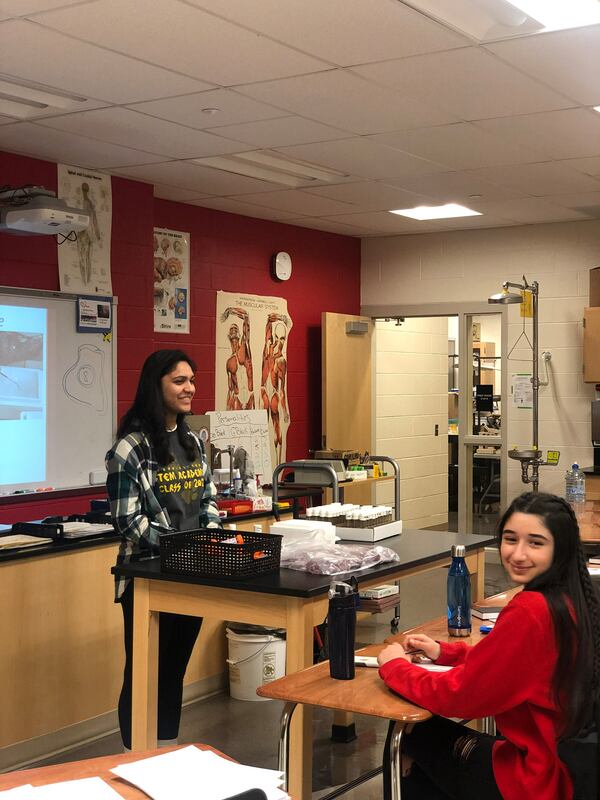
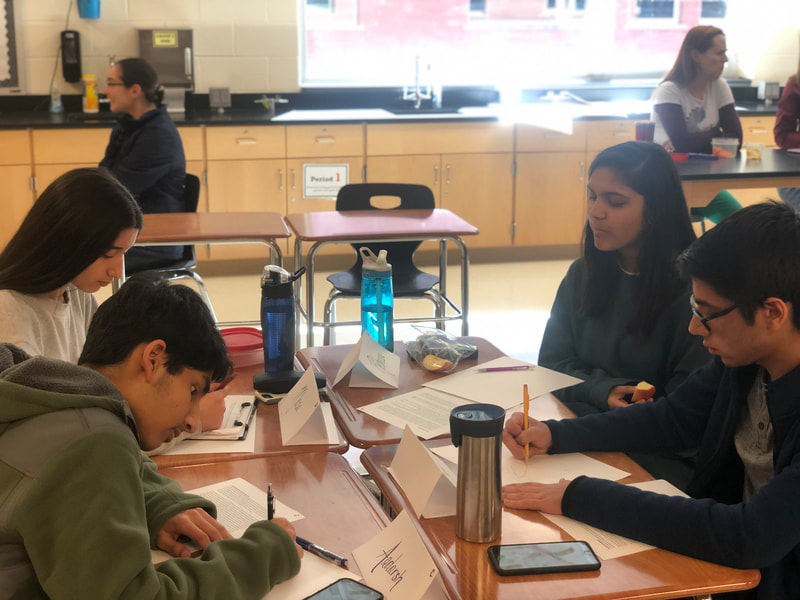
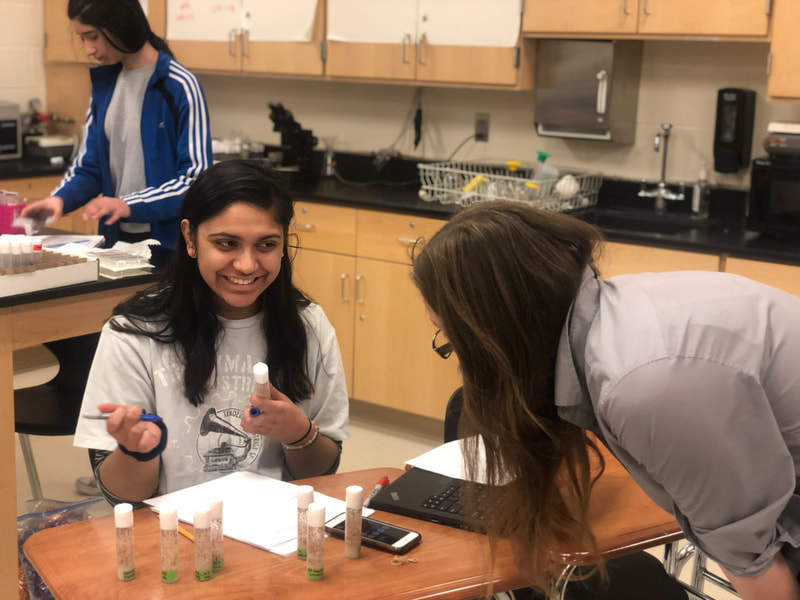
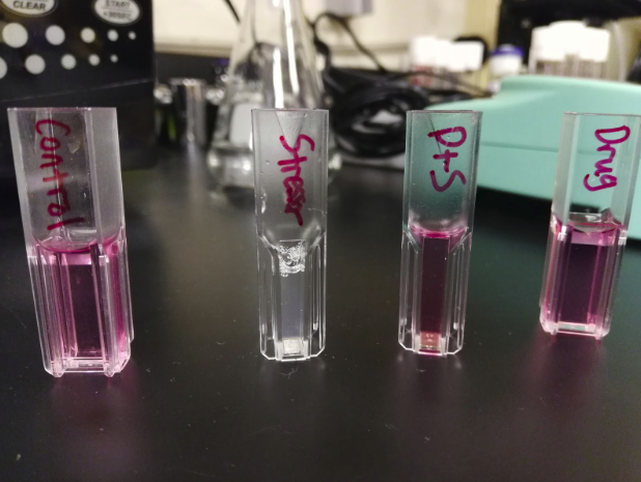
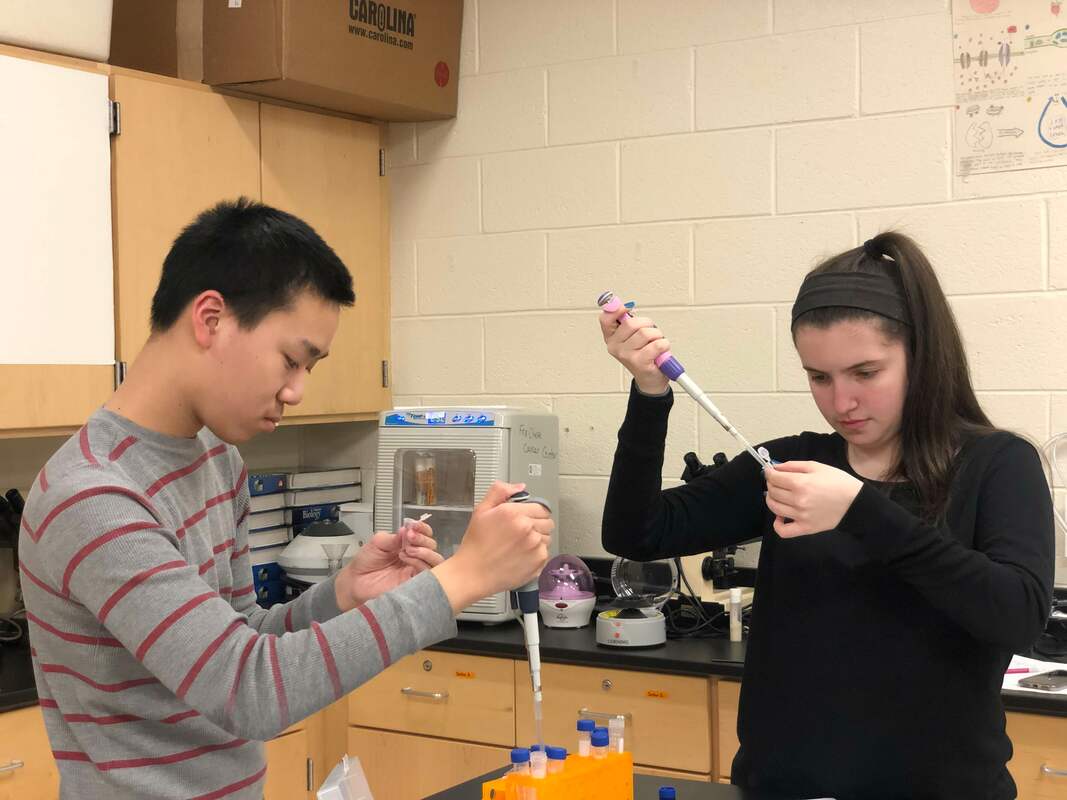
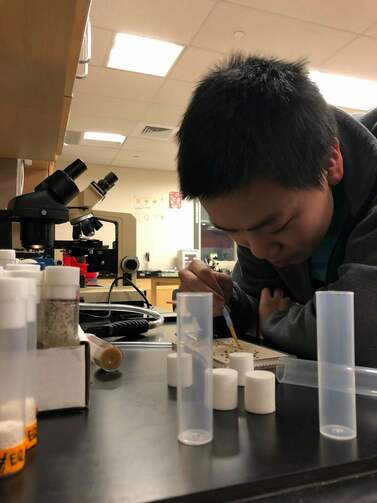
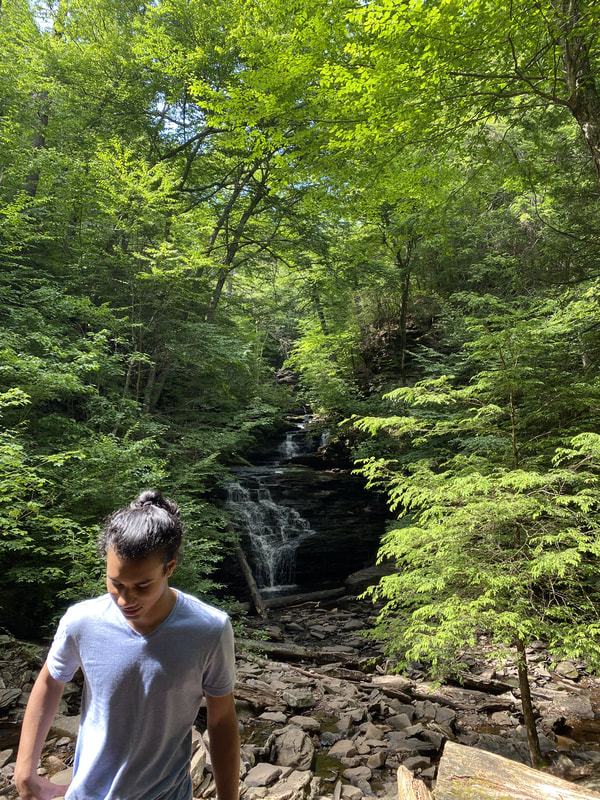
 RSS Feed
RSS Feed